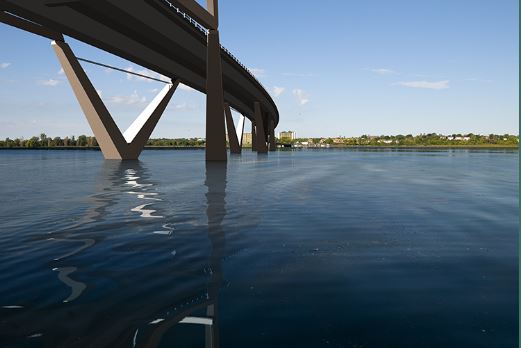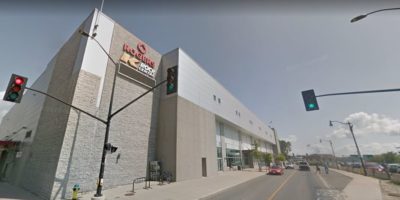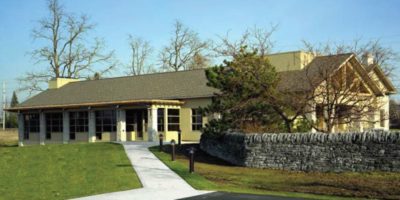The City of Kingston is moving ahead with a crucial land assembly prior to construction of the Third Bridge crossing.
But the outcome means a handful of home and business owners will have to move.
Councillors gave staff the authority to open negotiations, or launch “last resort” expropriation, with eight property owners in the area of Montreal Street and John Counter Boulevard. The city wants to buy those properties to make room for the bridge landing point on the western shore of the Cataraqui River.
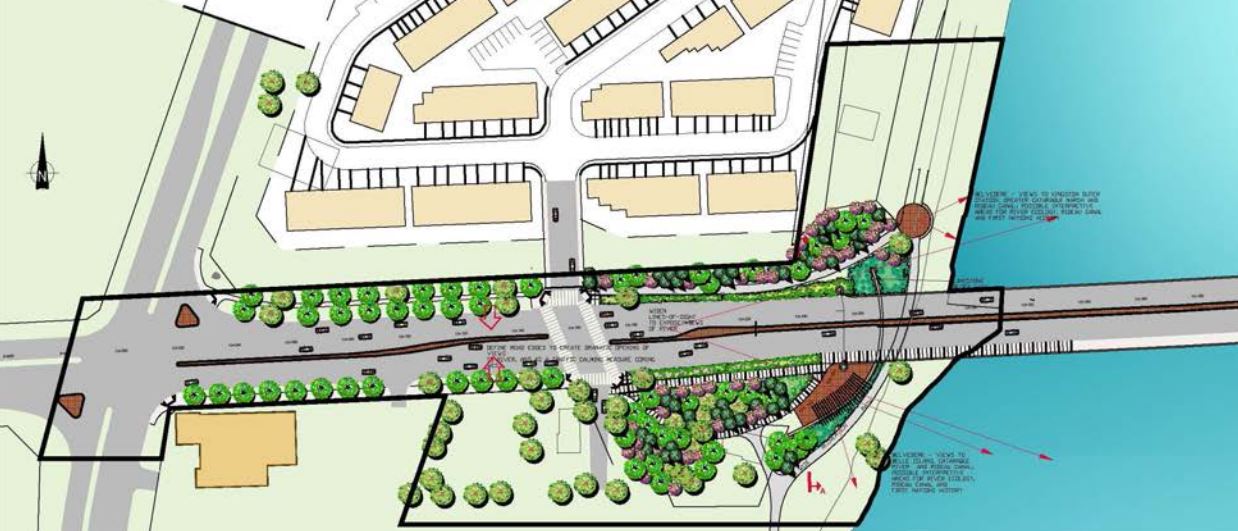
The city wants to buy 8 properties in the area of John Counter Blvd. and Montreal St. to make room for the bridge landing. This concept design shows what the revised area will look like.
Some of the properties include houses along a road that slopes down to the river.
The timeline for property acquisition is critical if the $180 million bridge construction is to start in “mid to late” 2019, according to staff.
“If we don’t get that started this summer staff can’t guarantee access to start the bridge work,” explained Peter Huigenbos, the city’s director of real estate and environment initiatives.
The direction that council approved unanimously at their May 1 meeting is to start work on possible expropriation – a seldom used, but powerful municipal tool to acquire land – should home or business owners not agreed to take a voluntary buyout. The forced sale process takes about a year.
However, staff insisted they’d prefer to negotiate fair market payments with affected land owners rather than try to force them to leave.
“(Expropriation) is a word that scares a lot of people,” community services commissioner Lanie Hurdle told council. “That’s not our first step.”
Paul Martin, who owns property at 919 Montreal Street, is worried about the fast-track negotiation process and whether he will get fair compensation.
“I won’t assume I’m going to be dealt with fairly,” he told council.
Martin claimed he didn’t get a fair cash settlement when the city purchased another piece of land he owns to accommodate the widening of John Counter Boulevard. He says land owners who receive cash can’t expect to easily replace the homes or businesses they’re giving up.
“We need meaningful and up-to-date information on the full impact on properties and businesses.”
His request for a public meeting among affected land owners, more political involvement in the staff-led negotiations and more study on the potential impacts on affected properties did not gain much traction among councillors. Many say land negotiations are typically done behind closed doors and not in a public forum.
City officials did, however, pledge to hold a public meeting to provide a general update on the status of the bridge project, touted as Kingston’s largest infrastructure project in modern times.
“The longer this is delayed the more expensive it’s going to be,” said Mayor Bryan Paterson of the overall bridge timelines.
Funding for the bridge, linking John Counter Blvd to Gore Road with a 1.1 kilometre span over the river, is now in place with the provincial and federal governments contributing a one-third share, or $60 million each.
The final land assembly couldn’t begin until the funding was in place.
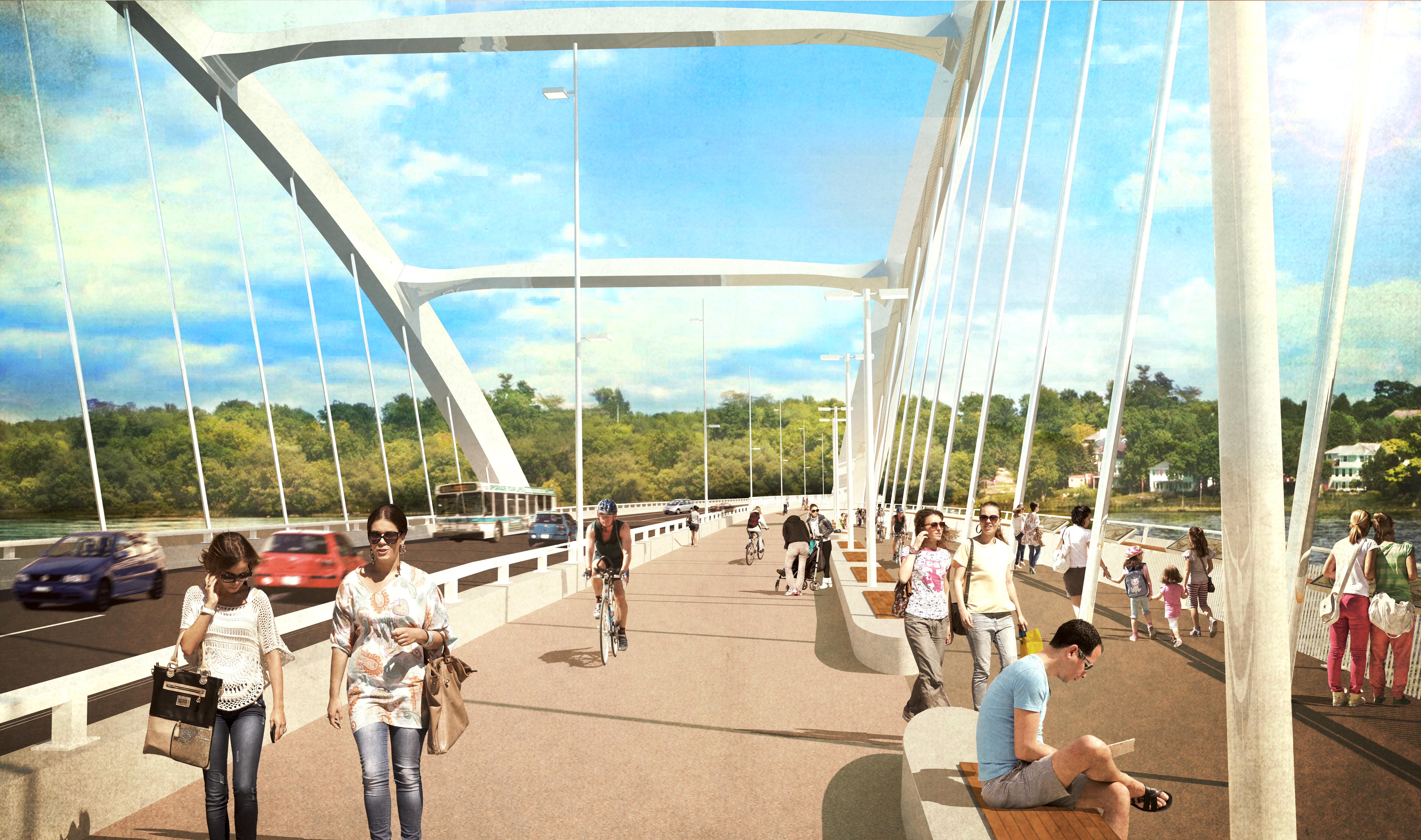
A concept view of the Third Bridge crossing showing a multi-use pathway and public lookout point over the Cataraqui River
Deputy commissioner Mark Van Buren, who’s leading the bridge work, says the city is currently in the process of seeking qualified firms to design and build the east-west transportation route. The final contract award, what’s known as an ‘integrated project delivery’ model, will involve a project team consisting of the city, bridge designers, consultants and the builder. The contract is expected to be awarded later this year.
“We are confident the project will be delivered within the budget envelope that’s established,” Van Buren explained.
The city’s real estate department will handle the land acquisition talks while the contractor bids are finalized.
Huigenbos says the city will pay for property appraisals and any legal fees incurred by private land owners in order to reach a fair market settlement to clear a path for the two lane bridge right-of-way.
The city already owns sufficient land on the eastern landing point of the bridge.
